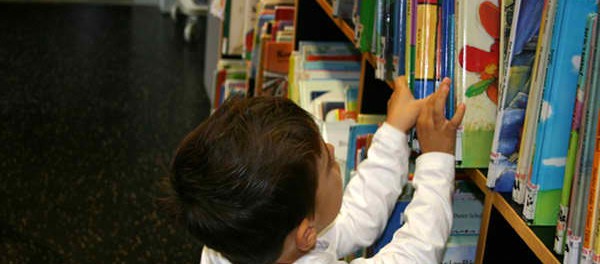Early Childhood Education: The Key to Effective Learning
Paulo was called to the Principal’s Office because of his unruly and inattentive behavior during class. At 11 years old, he was a freshman in high school but no stranger to the Principal’s office. The principal asked to speak to both his parents, but only later found out that they had long been separated. Paulo lived with his mother but was usually left to the sole care of the yaya (or nanny) since he was a baby. His mother was busy “putting food on the table” and had very little time or energy to guide him as he grew older. The principal also discovered that Paulo was disruptive in the classes where he had difficulty understanding the subject, such as math. In other subjects, he was more cooperative although he was barely passing the grade. Paulo later opened up and expressed his frustration over subjects he could not make sense of. Understanding basic math seemed to elude him. It was apparent, that Paulo had lacked the proper guidance during his childhood formative years.
Educational experts say that the Formative years occur from the period of birth until the age of five. A child’s intellectual capacity, social skills and behavior are molded by that time. Studies show that approximately 90 percent of a child’s brain has developed during that period.
Dr. Shore, chair in educational leadership said, “By the time children reach age three, their brains are twice as active as those of adults. Activity levels drop during adolescence.”
Newborns have zero knowledge of the world and their environment, and it is only the people, (particularly the parents) around them that give them the power to know and develop. What your parents model or teach you to do and say during formative years will be carried until adolescence. According to a neuroscience research, a child’s brain during those first five years is very susceptible to external factors in the environment.
Defining Infancy and Childhood
The phase between birth and two years later belongs to the infancy stage. Visual patterns such as facial features and sounds are their key signs to recognize and anticipate events within their environment. Apart from visual guides, genetic reflexes help them as well to interact with their environment. Emotional responses like surprise, distress, relaxation and excitement start to manifest through three-month old infants; whereas, sadness, fear and anger only start to emerge during the first year. The use of imagination to figure out events appears at 18 months of age.
The stage after infancy is called childhood. It involves children from two years old up to the age of 12 or 13. Early years in childhood are mostly comprised of language distinction and familiarity. Normally, first spoken words come from 12-14 months old and when they reach 18 months, they already have spoken an average of 50 words. These children then will gradually learn how to combine two to three words to produce sentences until they learn basic rules of their language including grammar, conjunctions, prepositions and simple noun-verb agreements. Between the ages 7 and 12, children begin to understand logical patterns and abstracts. They start to experiment with their behaviors and manipulate the environment, which later on they will adapt to next life stages. In terms of emotions, children in this age are already conscious of their emotional states as well as that of others.
Parental Involvement
“The formative period was said to be the best window of opportunity that we must seize or we will forever lose the vast human potential that exists in these children” – Rosmah, Borneo Prime minister’s wife
A person’s own individual identity when he grows up could be attributed to the way he was raised during his early childhood. It has been shown that a child’s rapid vocabulary progress is significantly linked to how often their parents talk to them during their childhood years. It is a crucial time for parents to teach their children all things they need to learn at a young age. An active and consistent participation in children’s learning activities like reading, storytelling and teaching basic school knowledge, build a strong foundation for children’s growth and development. “It’s very difficult to catch up,” said by Linda Craven, an early childhood education program chairwoman and instructor.
Government’s Role in Early Childhood Education
Aside from parents, attending early childhood education will help to maximize learning and development. Not only academic skills are shaped in preschool but most significantly, a child’s physical, emotional and social abilities. Unfortunately, about 95 percent of government’s public spending goes after early childhood. Given the fact that a child behind first grade has only less than 13% chance of catching up to higher grade levels, more spending and attention should be given to early childhood education.
A report from 2005 Children’s Institute Publication states that about 74% of poor readers in the third grade are still poor readers when they reach the 7th grade. Also, if a child fails to master reading by the end of the third grade, most probably that child would not graduate high school.
Focusing on early childhood education for a child’s development during the formative years offers several benefits one of which is creating successful students. Studies show that attending early childhood education increases the number of high school graduates, reduces grade repetition and lowers the number of special education children. Furthermore, majority of children who are able to attend childhood programs are more likely to become responsible adults. Specifically, it results in lower crime rates, fewer cases of teenage pregnancy, high employment rate and higher wages, and the formation of stable families.
So which is more effective learning: Early childhood education or extended years in school during adolescence?
___________________________
References:
Ryan, M. (2008). Most vital part of education takes place early: Child’s first five years. Retrieved from www.statesmanjournal.com
Educational Technologies. (2011). Understanding child development through brain development. Retrieved from www.etllearning.com
Bornero Post. (2011). Formative years critical for child’s development, success throughout life. Retrieved from www.theborneopost.com
Encyclopedia Brittanica. (2013). Psychological development. Retrieved from http://www.britannica.com
Tamis-Lemonda, C. & Rodriguez, E. (2009). Parent’s role in fostering young children’s learning and language development. Retrieved from www.child-encyclopedia.com
Early Childhood Alliance. (2011). Benefits of early childhood education. Retrieved from www.earlychildhoodalliance.com

